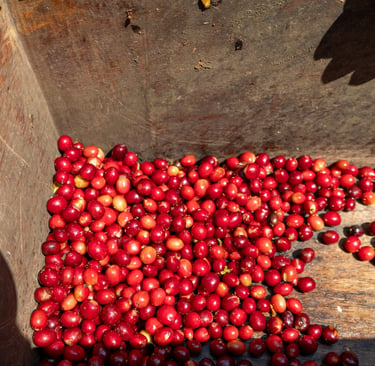What You Don’t Know About Robusta Coffee
Robusta coffee often gets dismissed as bitter or low quality, but there’s more to this bold bean than meets the eye. In this post, we uncover the surprising truths about Robusta—from its climate resilience and high caffeine content to its essential role in espresso and potential in sustainable farming. Whether you're a coffee purist or an espresso lover, it's time to give Robusta the respect it deserves.


Let’s be honest—Robusta gets a bad rap. It’s often seen as the “cheap” coffee, the filler in instant blends, or the bitter backup bean. But the truth is, most people don’t actually know much about Robusta, let alone what makes it unique—and even valuable—in the coffee world.
Here’s what you probably didn’t know about the bold, misunderstood cousin of Arabica.
Robusta Is a Survivor
Robusta (Coffea canephora) thrives where Arabica struggles. It grows:
In low altitudes and high heat
With minimal rainfall
And it resists pests, disease, and harsh conditions
This makes it a lifeline for many farmers, especially in regions where climate change is already making Arabica harder to grow.
It Packs Twice the Caffeine
Robusta beans contain about 2.2–2.7% caffeine—nearly double the amount in Arabica. That extra caffeine gives it:
A natural resistance to pests
A more bitter, earthy taste
A stronger jolt in your morning cup
If you’re drinking coffee for energy, Robusta gets the job done.
It’s Not All Burnt Rubber
Robusta’s reputation for harsh, rubbery flavors is only half the story. Yes, low-grade Robusta used in mass-market blends or instant coffee can be rough. But specialty-grade Robusta exists—and when grown, processed, and roasted with care, it can offer:
Dark chocolate notes
Nutty, woody richness
A heavy body and intense crema (perfect for espresso)
Try high-quality Robusta from Uganda or India, and you might be surprised.
It’s the Backbone of Espresso
If you love a thick, golden espresso crema, you can thank Robusta. Many Italian espresso blends include 10–30% Robusta for:
Crema thickness
Bold flavor that cuts through milk
A rich, syrupy mouthfeel
You may be drinking Robusta every day—and not even know it.
It's More Sustainable (in Some Ways)
Because Robusta is easier to grow and less susceptible to disease, it can be:
Less chemically intensive
Higher yielding
More resilient in a changing climate
For farmers in countries like Vietnam, Uganda, and Indonesia, Robusta is a reliable, economic crop—and deserves respect for that alone.
Final Sip
Robusta may not have the fruity, floral notes of Arabica, but that doesn't make it inferior—it’s different, and sometimes, just what a coffee blend needs. With climate change affecting Arabica-growing regions, Robusta might also be the future of sustainable coffee.
So before you write it off, give Robusta a second look—preferably in a well-sourced blend or single-origin roast that lets its character shine.'
📖 What You Don’t Know About Arabica Coffee
Want to compare it side by side? Pair this with our post on Arabica coffee and taste the difference yourself.


